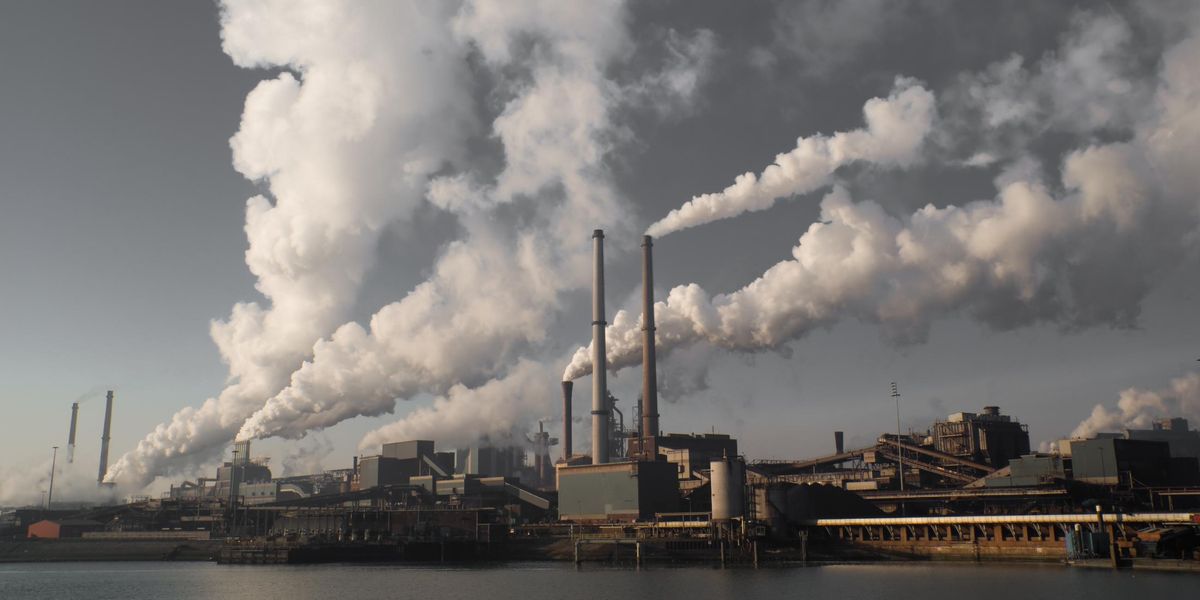‘Sad What We Are Doing’: Global CO2 Increase Sets New All-Time Record | Common Dreams
'Sad What We Are Doing': Global CO2 Increase Sets New All-Time Record Common Dreams


Record Spike in Carbon Dioxide Concentration

The average monthly concentration of carbon dioxide in the atmosphere jumped by a record 4.7 parts per million between March 2023 and March 2024, according to new data from NOAA’s Mauna Loa Observatory in Hawaii.
Increasing Pace of CO2 Addition to the Atmosphere
The spike, reported by the University of California, San Diego’s Scripps Institution of Oceanography on Wednesday, reveals “the increasing pace of CO2 addition to the atmosphere by human activities,” the university said.
Importance of Sustainable Development Goals (SDGs)
“I’d make this the lead story in every paper and newscast on the planet,” author and long-time climate activist Bill McKibben wrote on social media in response to the news. “If we don’t understand the depth of the climate crisis, we will not act in time.”
Keeling Curve and Rising CO2 Concentrations
Scientists have been tracking rising CO2 concentrations from Mauna Loa since 1958, and their upward trajectory has come to be known as the “Keeling Curve,” named for Charles Keeling, who began the measurements. The curve has become an important symbol of the climate crisis—making visible how the burning of fossil fuels and the clearing of vegetation has released more and more CO2 into the atmosphere, where it traps heat from escaping into space and raises global temperatures.
Historical Context and Current Levels
For most of human history, concentrations have hovered around 280ppm, and the curve’s first measurement put them at 313. Sixty-five years later, C02 concentrations averaged 419.3 ppm in 2023, a level not seen since 4.3 million years ago when sea levels were around 75 feet higher and parts of today’s Arctic tundra were forests. As of Wednesday, the Keeling Curve reported a daily concentration of 426.72 ppm.
Continued Global Growth in Fossil Fuel Consumption
The record jump from March 2023 to March 2024 surpasses the last record jump of 4.1 ppm from June 2015 to June 2016. “We sadly continue to break records in the CO2 rise rate,” Ralph Keeling, Charles’ son who now directs the Scripps CO2 Program, said. “The ultimate reason is continued global growth in the consumption of fossil fuels.”
Influence of El Niño Events
The record leaps from both 2015-2016 and 2023-2024 were also influenced by active El Niño events. The El Niño phenomenon increases atmospheric carbon dioxide because it leads to warmer, drier temperatures in the tropics, which decrease vegetation and encourage fires. Atmospheric CO2 levels tend to rise especially quickly toward the end of an El Niño cycle, and last March’s CO2 levels were unusually low, leading to a larger gap in the 12-month period.
Long-Term Rise in Fossil Fuel Emissions and Greenhouse Gas Levels
However, any regular climate variations such as El Niño events occur over the longer-term rise in both fossil fuel emissions and greenhouse gas levels. “The rate of rise will almost certainly come down, but it is still rising and in order to stabilize the climate, you need CO2 level to be falling,” Keeling told The Guardian. “Clearly, that isn’t happening. Human activity has caused CO2 to rocket upwards. It makes me sad more than anything. It’s sad what we are doing.”
Implications for the Future
Jeff Goodell, author of The Heat Will Kill You First, wrote in response, “We’re riding the Venus Express.” The record jump in CO2 concentrations comes as 2023 was the hottest year both on record and in around 100,000 years. Of the 12 months covered by the March 2023 to March 2024 period, 10 of them (June through March) were the hottest of that month on record.
SDGs, Targets, and Indicators
| SDGs | Targets | Indicators |
|---|---|---|
| SDG 13: Climate Action | 13.1 Strengthen resilience and adaptive capacity to climate-related hazards and natural disasters | Monthly concentration of carbon dioxide in the atmosphere |
| 13.2 Integrate climate change measures into national policies, strategies, and planning | ||
| 13.3 Improve education, awareness-raising, and human and institutional capacity on climate change mitigation, adaptation, impact reduction, and early warning | ||
| 13.a Implement the commitment undertaken by developed-country parties to the United Nations Framework Convention on Climate Change to a goal of mobilizing jointly $100 billion annually by 2020 from all sources to address the needs of developing countries in the context of meaningful mitigation actions and transparency on implementation and fully operationalize the Green Climate Fund through its capitalization as soon as possible | ||
| 13.b Promote mechanisms for raising capacity for effective climate change-related planning and management in least developed countries and small island developing States, including focusing on women, youth, and local and marginalized communities | ||
| SDG 15: Life on Land | 15.1 By 2020, ensure the conservation, restoration, and sustainable use of terrestrial and inland freshwater ecosystems and their services, in particular forests, wetlands, mountains, and drylands, in line with obligations under international agreements | Burning of fossil fuels and clearing of vegetation |
| 15.2 By 2020, promote the implementation of sustainable management of all types of forests, halt deforestation, restore degraded forests, and substantially increase afforestation and reforestation globally | ||
| 15.3 By 2030, combat desertification, restore degraded land and soil, including land affected by desertification, drought, and floods, and strive to achieve a land degradation-neutral world |
1. Which SDGs are addressed or connected to the issues highlighted in the article?
SDG 13: Climate Action
The article discusses the increasing concentration of carbon dioxide in the atmosphere, which is directly related to climate change. SDG 13 specifically focuses on taking urgent action to combat climate change and its impacts.
SDG 15: Life on Land
The article mentions the burning of fossil fuels and the clearing of vegetation, which contribute to the release of carbon dioxide into the atmosphere. SDG 15 aims to protect, restore, and promote sustainable use of terrestrial ecosystems, including forests.
2. What specific targets under those SDGs can be identified based on the article’s content?
SDG 13: Climate Action
– Target 13.1: Strengthen resilience and adaptive capacity to climate-related hazards and natural disasters.
– Target 13.2: Integrate climate change measures into national policies, strategies, and planning.
– Target 13.3: Improve education, awareness-raising, and human and institutional capacity on climate change mitigation, adaptation, impact reduction, and early warning.
– Target 13.a: Implement the commitment undertaken by developed-country parties to the United Nations Framework Convention on Climate Change to a goal of mobilizing jointly $100 billion annually by 2020 from all sources to address the needs of developing countries in the context of meaningful mitigation actions and transparency on implementation and fully operationalize the Green Climate Fund through its capitalization as soon as possible.
– Target 13.b: Promote mechanisms for raising capacity for effective climate change-related planning and management in least developed countries and small island developing States, including focusing on women, youth, and local and marginalized communities.
SDG 15: Life on Land
– Target 15.1: By 2020, ensure the conservation, restoration, and sustainable use of terrestrial and inland freshwater ecosystems and their services, in particular forests, wetlands, mountains, and drylands, in line with obligations under international agreements.
– Target 15.2: By 2020, promote the implementation of sustainable management of all types of forests, halt deforestation, restore degraded forests, and substantially increase afforestation and reforestation globally.
– Target 15.3: By 2030, combat desertification, restore degraded land and soil, including land affected by desertification, drought, and floods, and strive to achieve a land degradation-neutral world.
3. Are there any indicators mentioned or implied in the article that can be used to measure progress towards the identified targets?
The article mentions the monthly concentration of carbon dioxide in the atmosphere as an indicator of climate change. This can be used to measure progress towards the targets under SDG 13: Climate Action. Additionally, the article refers to the burning of fossil fuels and the clearing of vegetation as indicators of the impact on terrestrial ecosystems, which can be used to measure progress towards the targets under SDG 15: Life on Land.
4. SDGs, Targets, and Indicators
| SDGs | Targets | Indicators |
|---|---|---|
| SDG 13: Climate Action | 13.1 Strengthen resilience and adaptive capacity to climate-related hazards and natural disasters | Monthly concentration of carbon dioxide in the atmosphere |
| 13.2 Integrate climate change measures into national policies, strategies, and planning | ||
| 13.3 Improve education, awareness-raising, and human and institutional capacity on climate change mitigation, adaptation, impact reduction, and early warning | ||
| 13.a Implement the commitment undertaken by developed-country parties to the United Nations Framework Convention on Climate Change to a goal of mobilizing jointly $100 billion annually by 2020 from all sources to address
Copyright: Dive into this article, curated with care by SDG Investors Inc. Our advanced AI technology searches through vast amounts of data to spotlight how we are all moving forward with the Sustainable Development Goals. While we own the rights to this content, we invite you to share it to help spread knowledge and spark action on the SDGs. Fuente: commondreams.org
Join us, as fellow seekers of change, on a transformative journey at https://sdgtalks.ai/welcome, where you can become a member and actively contribute to shaping a brighter future.
|








